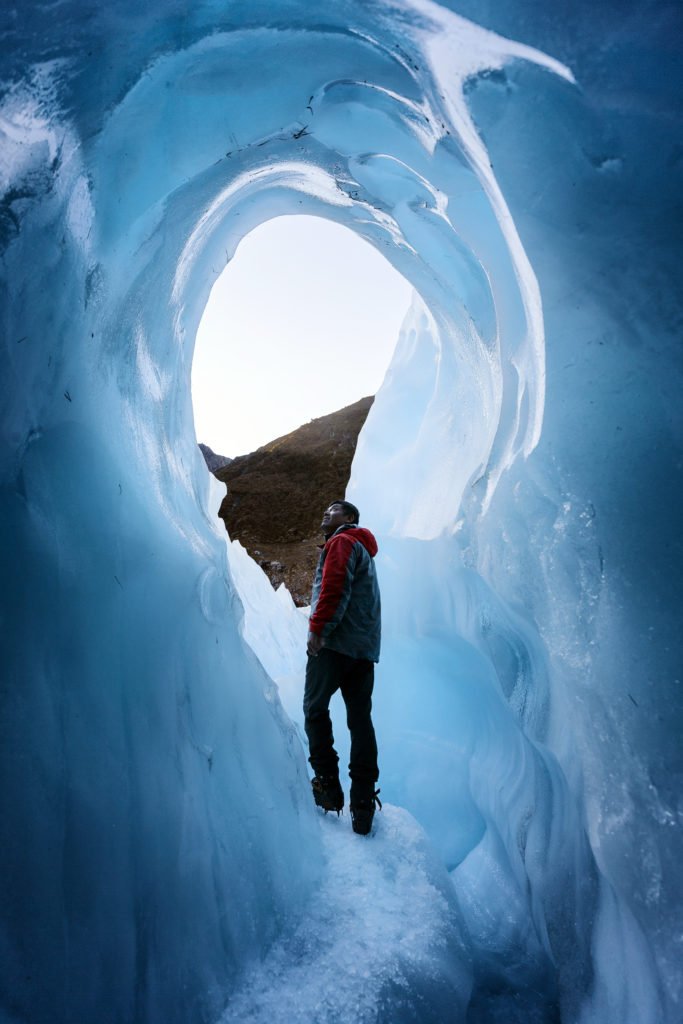Words Clare Chapman Images Virginia Woolf
Ten years ago, photographer Virginia Woolf stood at the terminus of Fox Glacier. This year, she returned to find that was no longer possible. Standing in the same place as she was a decade ago, she could see the face of the glacier kilometres away in the distance; the only way to access it now, via helicopter.

“This is something that is happening around the world, and it’s something that is the visible face of climate change. I don’t think we can stop it, but we can slow it,” she says.
Determined to record the fate of our glaciers, Virginia is following research teams on field trips, supported by funding from the Australasian Canon Masters programme. Pictured here is an image of Fox Glacier guide Passang Phurba Sherpa, which Virginia captured in May 2022 on a trip with University of Canterbury glaciology expert, associate professor Helen Purdie.
“It’s hard to comprehend that the beauty of ice tunnels like these may, in future, be a thing of the past. It’s hard to imagine that they may just no longer exist. Being able to capture images like this of our glaciers is a privilege. They are a moment in time in a changing world,” Virginia says.
According to Helen, the impact of Fox Glacier being shorter than at any other time in recorded history is vast, but primarily it is about lost connection.
“People tend to care more and take proactive steps to change if they feel connected to the environment. If people can’t go to the West Coast with their families and walk up and see the glaciers, that connection is lost. Now, there is an affordability barrier — having to get there by helicopter. As they keep receding further into the mountains, less people will connect and the flow on from that is less motivation to do something about how we live on our planet.
“If people do get on board and start being proactive, we can save a certain amount of ice in our mountains. The ice will be smaller but it will still be there. If we don’t, very few people will get to see glaciers in the future.”
View more of Virginia’s glacier photography at Virginia Woolf Photography.




